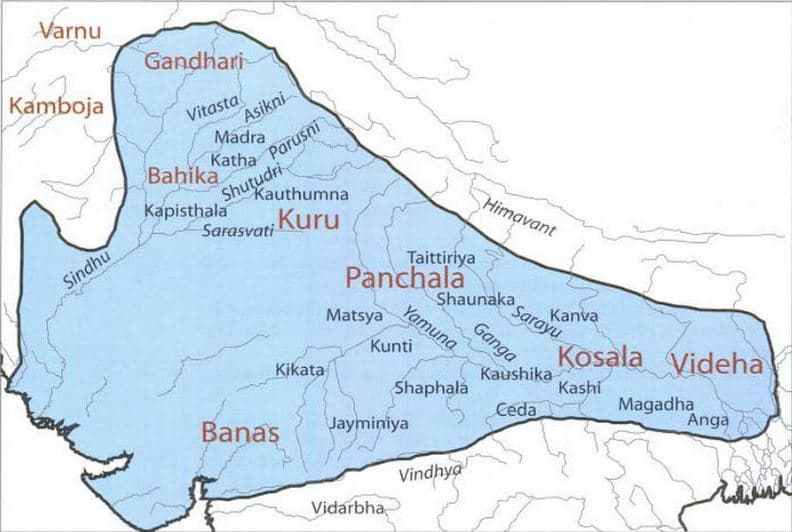Extent & Spread of Early and Later Vedic Period
 Divisions of Vedic Period
Divisions of Vedic Period
The information about the Aryans was mainly obtained from Vedas especially the Rigveda. They were originally semi-nomadic and pastoral and after reaching India, gradually they became agriculturists and began to settle down in one place. The core area where they settled down was called Sapta-Sindhava or the land of seven rivers.
The Vedic period can be categorized into 2:
- Early Vedic period
- Later Vedic period
Difference in Early & Later Vedic Age
| Sub-feature | Early Vedic period | Later Vedic period |
| Family | – Family, also known as kula, was the basic unit of the society. – It had a patriarchal structure & followed the joint family system involving several generations living under the same roof. – The head of the family was known as the kulapa. – Only sons had the right to inherit father’s property. |
– Patriarchal families – Birth of a daughter was often considered a source of misery – Head of the family had the right to disinherit his son – Male ancestors were worshiped. |
| Social groups |
– The Rig-Veda talks about Dasas, Dasyus, Nahusas and Panis – The Rig-Veda gives an impression that Dasa was a collection of tribes – The Dasas, described as dark & of hostile speech, were rich in cattle & lived in fortified strongholds. – The Panis were also wealthy in cattle treasures. – The Dasyus were said to be tamed & subdued to people for the Arya i.e., Dasyus were different from Aryans and the aboriginal people in India. |
Varna system became prominent. |
| Marriage | – Monogamous – Marriageable age for girls was 16 or 17 years – No evidence of child marriage – Women had the right to choose their life partner – Swayamvar – Widow Remarriage was common |
– Polygamy prevailed – Marriage from same gotra (descent from common ancestor) was no longer permitted – Widow Remarriage discouraged though not stopped completely |
| Education | – Gurukuls existed where students stayed with guru or the teacher at his house – Subjects taught included science, maths, astronomy, astrology, grammar, ethics & law. |
Education of women of the higher class was restricted |
| Position of women |
– Liberal towards women – Women enjoyed a status equal to men – Women could attend assemblies. |
– Women given a lower, subordinate position. – They were not allowed to participate in assemblies. |
| Social Division |
– Though there was a division into Brahmanas, Kshatriyas, Vaisya & Sudra, this was purely based on occupation – Professions were not hereditary. |
– Rigid caste system – Varna system. The Brahmans & Kshatriyas enjoyed many privileges. – The Vaishyas were indulged in trade & agriculture – Sudras were meant to serve the other 3 classes. |
















